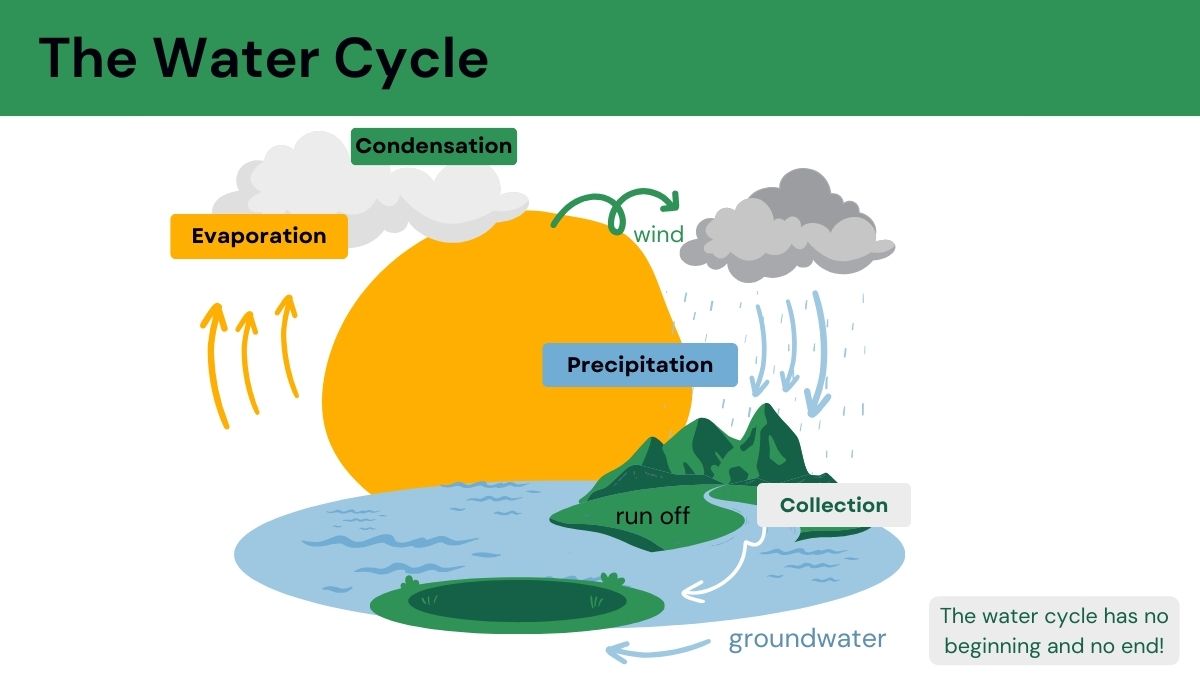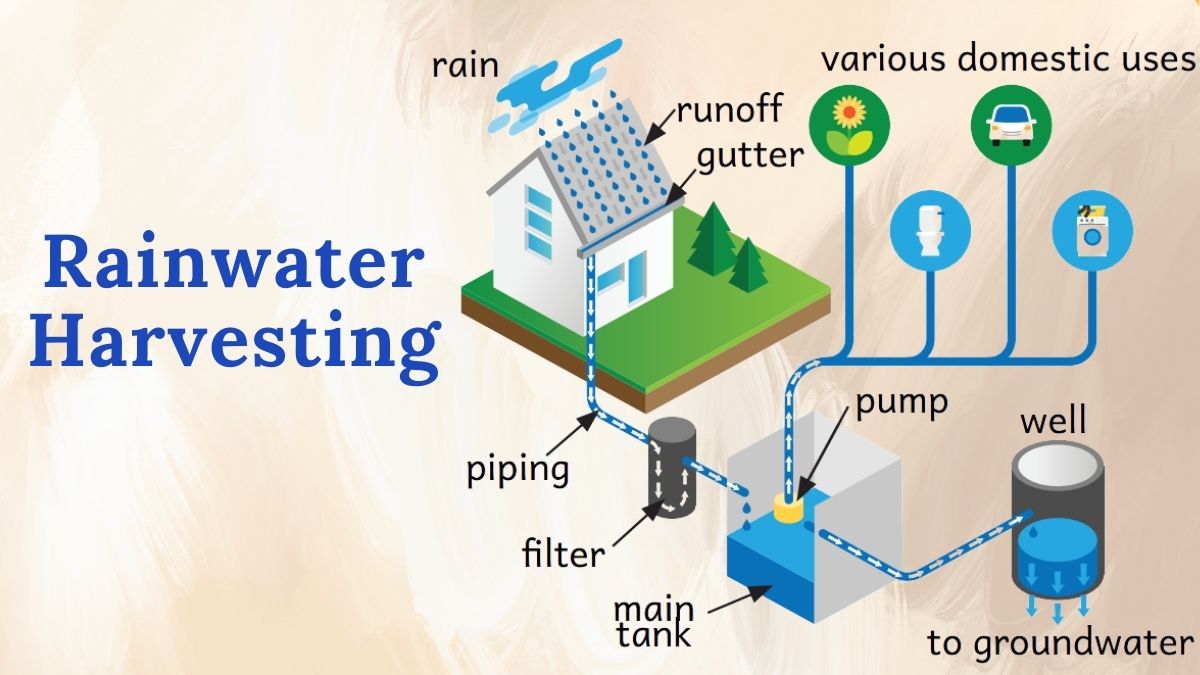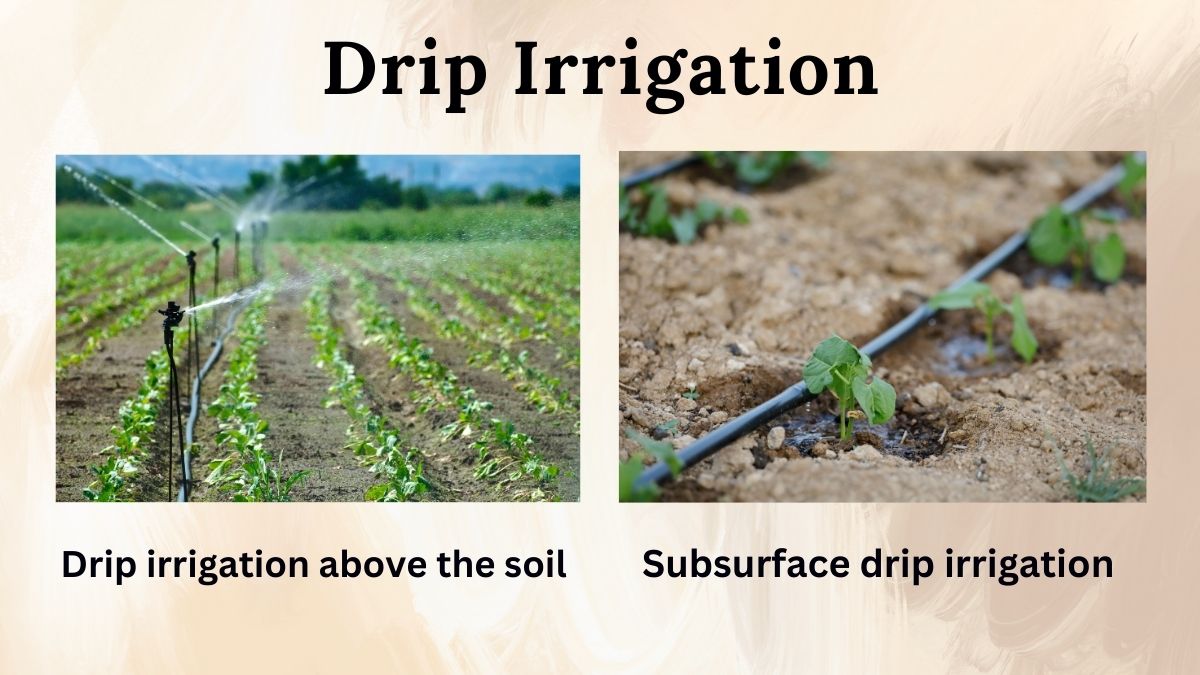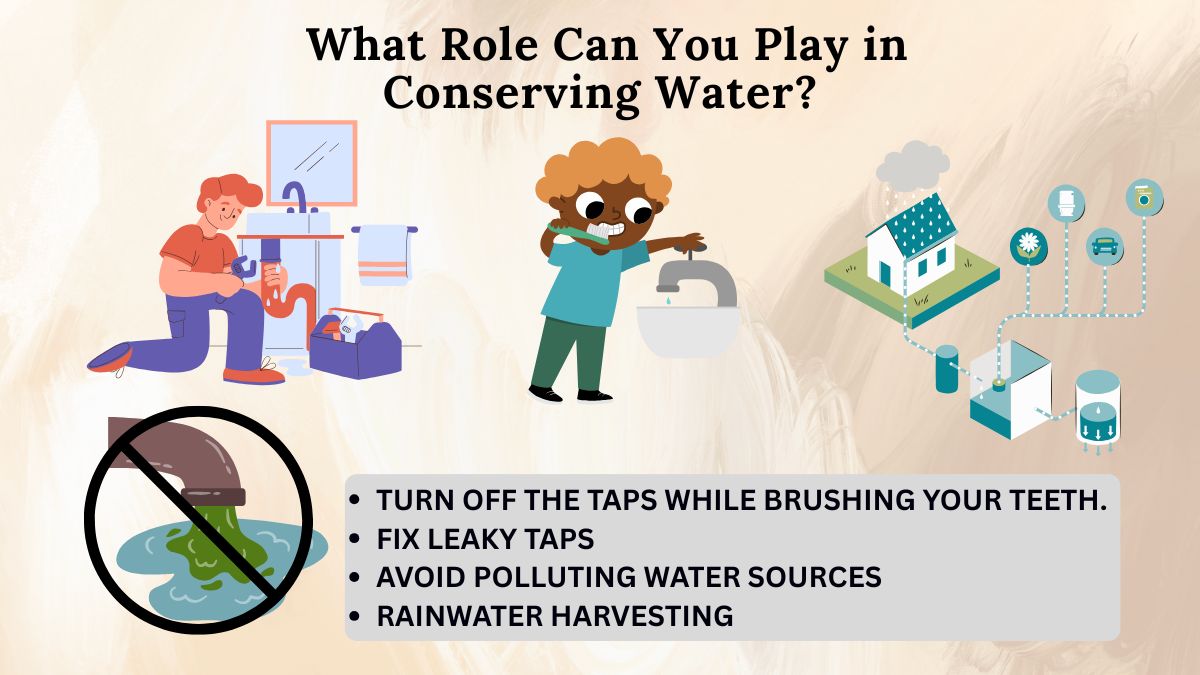Scarcity of Water For Class 7
Learning Objectives:
By the end of this chapter, you will be able to:
- Explain water scarcity & its causes.
- How is water distributed on Earth, and how much of it is freshwater?
- Sometimes you ever wonder why is there water shortage water shortage happen due to depletion of the water table.
- Write an article in 200 words on the need of Water conservation, Water harvesting and management of water.
- Look for individual behaviours that can help you conserve water & avoid wasting gallons of water.
1. Water – A Precious Resource
It is one of the most vital resources for every organism on this planet. It is utilized in a multitude of processes like agriculture, industry, and everyday life. Although water is present in vast quantities in nature, it is limited & not always accessible for human use, making it a precious resource.
-
Only 2.5% of the water on earth is freshwater that can be used by humans. Almost 70 percent of this is sequestered in ice caps and glaciers, leaving less than 1 percent of the world’s freshwater available in rivers, lakes & groundwater for human consumption.
-
Water Scarcity is the lack of enough water resources to meet water demand in an area. Natural causes or human activities, such as overconsumption, pollution, & poor management of resources can also lead to water scarcity.
2. How Much Water is Available on Earth?
Water is abundant on planet Earth, accounting for about 71% of the surface, but the majority of what we see is saltwater (about 97.5%) and thus not suitable for human consumption or irrigation. Freshwater makes up for just 2.5% of the total water on Earth, & it is not equally distributed around the world.
-
Freshwater distribution:
-
68.7% is locked away in polar regions in the form of glaciers and ice caps & therefore, not usable.
-
30.1% of water is underground aquifers and wells, and is often used for agricultural & industrial purposes.
-
Only about 0.3% of the world’s freshwater is available in lakes, rivers and reservoirs — the sources of water on which humans depend.
Although water availability does not appear to be a major issue, distribution is uneven, consumption is excessive, and water scarcity has emerged due to overconsumption of this valuable resource.
What are the different forms of water?
Water exists in three main forms:
-
Solid (Ice): The solid state of water is known as ice. This process happens when the temperature falls below 0°C (32°F). As the temperature drops, the water molecules slow down & arrange themselves into a solid structure. Ice is less dense than liquid water and so it floats.
-
Liquid (Water): The most common form of water, liquid water, occurs at temperatures between 0°C & 100°C (32°F and 212°F) under normal atmospheric pressure. It is the form in which water is found in rivers, lakes, oceans, and also in the human body.
-
Gas (Water Vapor): When heated to over 100°C (212°F), water becomes water vapor (gas). This type of water is unseen & exists in the air, particularly as humidity.
These types of water continually transition between states, melting, evaporating, condensing, and freezing — it is a process called the water cycle.
The water cycle
The water cycle (hydrological cycle) is the continuous movement of water within the Earth & atmosphere. It consists of all the processes in which water moves through the atmosphere, the earth, and water bodies. Solar energy drives the water cycle, which is also essential for the renewal of freshwater resources.

Stages of the Water Cycle:
There are four key stages in the water cycle:
1. Evaporation
-
Evaporation is where sun heats the water in oceans, rivers, lakes & other bodies of water turning it into water vapour (gas). This process happens mostly in oceans and big water bodies, but it can also happen from smaller lakes, puddles and soil.
-
Transpiration, the loss of water vapour from plants, is also evaporation. Evapotranspiration is the collective term for both evaporation and transpiration.
2. Condensation
-
When water vaporizes into the air, it begins to cool as it climbs up further into the atmosphere. When the water vapor cools down it condenses back into tiny droplets of water, creating clouds.
-
These tiny droplets come together & collectively make the visible clouds that you see in the sky. The reverse, condensation, is the change from gas to liquid.
3. Precipitation
-
Cloud water droplets coalesce and become heavy enough to fall back to the Earth's surface as precipitation. This may take many forms, including:
-
Rain: Liquid water that, when above freezing, falls from the sky.
-
Snow: Ice crystals that precipitate when the temperature is below freezing.
-
Hail: Round balls of ice that fall during thunderstorms.
-
Sleet: A mix of rain & snow.
-
The Role Of Precipitation In The Water CyclePrecipitation, which refreshes water, particularly freshwater, for the Earth, and what you would want in the water cycle.
4. Collection
-
When the water eventually returns to the Earth, it pools in oceans, lakes, rivers, streams, and underground reservoirs (aquifers). This water will soon evaporate once again, carrying the cycle forward.
-
Infiltration: Some water soaks into the ground & replenishes groundwater supplies. This water is held in subterranean aquifers that are readily accessed by wells or springs.
Groundwater
Groundwater is water that is kept below the Earth surface in the small gaps between soil & rock particles. That water falls as rain or surface water, which subsequently infiltrates into the soil. Aquifers are massive underground reservoirs where groundwater is found. It serves as a vital water supply for drinking, agriculture, and industry, particularly in regions where surface water sources such as rivers or lakes are limited. But if groundwater overuse occurs, over-extraction can cause the water table to drop, wells to run dry, land to sink (land subsidence), and saltwater intrusion in coastal areas. We can adopt water conservation technologies, rain water harvesting & groundwater pollution prevention measures to conserve groundwater for future generation.
One of our most precious resources is groundwater. It does a lot of great things. Groundwater is used for various purpose, which are as follows:
-
Groundwater is consumed to the greatest extent in the irrigation of agricultural fields and therefore, it has a key role in the crops production.
-
Drinking & doing various household works done by groundwater water.
-
Industrial use also uses groundwater.
3. Depletion of the Water Table
The water table is the underground layer of water stored in soil or rock. This water is a crucial source of freshwater, especially in areas where surface water is scarce.
The water table is depleted when groundwater is being drawn out from below much faster than it can be replaced by rain falling above. This causes the water table to drop, making it harder for communities to draw from wells & underground reservoirs.

-
Causes of Depletion:
-
Over-extraction: Overuse of groundwater for agricultural irrigation, industrial processes, and domestic use.
-
Drought: Extended dry spells diminish the rain that refill the aquifer.
-
Pollution: Groundwater contamination with chemicals & waste from industrial activities, agriculture, and sewage.
-
Consequences of Depletion:
-
Water Shortage: The water table is falling, and it means that less & less water is accessible to use causing water shortage.
-
Land Subsidence: When too much groundwater is extracted from beneath the surface, the ground above the depleted water reserves sinks, damaging buildings and infrastructure.
4. Distribution of Water
Water is quite unevenly distributed throughout the world. Asia, Africa and the Middle East receive plentiful rainfall whereas elsewhere it is draught & water shortage.
-
Equatorial Regions: Areas that get a lot of rainfall all year round, causing tropical forests & lots of water.
-
Arid and Semi-Arid Regions: Deserts, like the Sahara & Arabian Peninsula, receive little rain and are in chronic extremities of water.
-
Geographical and Climatic Factors:An area can not have water unless its natural climate and geography allow water to come there. Climate change, which leads to more severe weather patterns including lengthier stretches of drought, is intensifying the issues associated with lacking water.
5. What is the Management of Water?
The planning and regulation of the use of water resources or the water cycle.
Water management is successful against water shortage by ensuring the right use of water with great efficiency. It includes:
-
Conservation:A means of limiting unwarranted water consumption in households, industries, and agriculture.
-
Water Harvesting: The process of capturing and storing rainwater for future use. It’s most useful for regions that experience irregular rainfall.
-
Water Recycling: The process of treating wastewater for reuse in agriculture or industrial activity, which decreases the demand for the consumption of fresh water.
-
Improved Irrigation Systems: Now if you think of moving water, the water that is required for crop production, and releasing that water when needed it can lead to modern irrigation systems like drip irrigation where if built-out crops are only provided with the water necessary to keep them well-hydrated.
Rainwater Harvesting
Also known as rainwater collection, it refers to the collection & storage of rainwater for future utilization. Wastes Less Water & Makes Less Dependence On Groundwater

Methods of Rainwater Harvesting:
-
Rooftop Rainwater Harvesting – Roof runoff is fed into storage tanks or recharge pits.
-
Surface Runoff Harvesting – Harvesting rainwater from roads, open spaces and fields for storage or groundwater recharge.
-
Recharge Pits – Small pits dug in the ground, to help rainwater seep into the earth & replenish the groundwater.
-
Check Dams – Creating small embankments across streams to slow the free flow of rainwater & allow it to permeate the surface.
-
Percolation Ponds – These are shallow ponds built to hold rainwater so that it can percolate naturally into the ground.
Benefits of Rainwater Harvesting:
-
Conserves Water – Less reliance on groundwater, prevents water scarcity.
-
Prevents Flooding – Rainwater harvesting is a great way to help disperse excess rainwater to avoid waterlogging.
-
Improves Groundwater Levels – Replenishes the underground water resources & keeps the water level.
-
Reduces Water Bills – Offers an alternative water source, helping to reduce water consumption.
-
Eco-friendly – Supports sustainable water consumption and decreases pressure on water sources.
Rainwater harvesting helps us by providing rainwater for drinking & cooking purposes.
Drip Irrigation
This method of drip irrigation floods the soil in controlled quantities around the plant’s root zone so that the plant can absorb it. Drip irrigation: In this system, water is supplied drop by drop to the plant roots by a network of pipes, tubes & emitters.

How Drip Irrigation Works:
-
Water travels along main pipes and into smaller pipes that lead to plants.
-
Small emitters or drippers deliver water right next to the roots.
-
Plants are watered intermittently so they receive adequate moisture.
Benefits of Drip Irrigation:
-
Saves Water – Compare to the traditional irrigation, save 30-70% more water.
-
Prevents Water Waste – Water seeps to roots below, rather than evaporating from mulch or being lost to runoff.
-
Improves Crop Growth – Ensures a continuous water source, allowing healthier plant growth.
-
Reduces Weed Growth – Water is fed only to plants & grass so that weeds do not receive moisture.
-
Saves Time & Labor – Automated systems enable less manual watering.
It is a very good method for conserving water and proper farming; Drip irrigation is widely used in dry areas and vegetables, fruits, and flowers among all crops. 🌱💧
6. What Role Can You Play in Conserving Water?
Conserving water and stopping water wastage is a duty of all. You can do the following:
-
Fix Leaky Faucets: Over time, any type of leak wastes water. Repairing them quickly can save water.
-
Use Water Efficiently: Use tap water only when necessary, buy water-saving machines & take shorter showers.
-
Rainwater Harvesting: Install a rainwater harvesting system during the rainy season. This saved water can then be used for gardening, car washes or other uses not needing potable water.
-
Use Water-Efficient Landscaping: Use native plants in your gardens which use less water to grow.
-
Avoid Polluting Water Sources: proper disposal of waste, chemicals, and sewage prevents contamination of freshwater resources.
We can only prevent the dearth of water by making a few changes to our daily lives & making water-saving practices a habit!

Things You Have Learned!
- Overuse, pollution, and mismanagement lead to water scarcity.
- 2.5% of Earth's water is freshwater, which has limited supply.
- Groundwater is essential but facing depletion from over-withdrawal.
- The water cycle comprises evaporation, condensation, precipitation, and collection.
- Water conservation techniques are rainwater harvesting, drip irrigation, and efficient usage.
- Simple changes such as repairing leaks and installing water-efficient appliances contribute significantly.
CBSE Schools In Popular Cities
- CBSE Schools in Bangalore
- CBSE Schools in Mumbai
- CBSE Schools in Pune
- CBSE Schools in Hyderabad
- CBSE Schools in Chennai
- CBSE Schools in Gurgaon
- CBSE Schools in Kolkata
- CBSE Schools in Indore
- CBSE Schools in Sonipat
- CBSE Schools in Delhi
- CBSE Schools in Rohtak
- CBSE Schools in Bhopal
- CBSE Schools in Aurangabad
- CBSE Schools in Jabalpur
- CBSE Schools in Jaipur
- CBSE Schools in Jodhpur
- CBSE Schools in Nagpur
- CBSE Schools in Ahmednagar
- CBSE School In Tumkur











